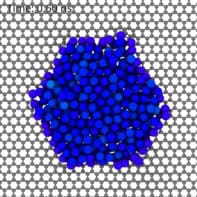Silicon -- the archetypal semiconductor -- has at long last been shown to demonstrate superconductivity. By substituting 9% of the silicon atoms with boron atoms, physicists in France have found that the resistance of the material drops sharply when cooled below 0.35 K (Nature 444 465).

Boron is widely added to silicon to make it a useful semiconductor, but rarely does it account for more than 0.002% of the total number of atoms. Because it has one fewer electron than silicon available for bonding with neighbouring atoms, boron incorporated into silicon leaves a positively-charged “hole” at each site where boron’s “missing” electron would be paired with one of silicon’s. At room temperature these holes can move around, making boron-doped silicon a “p-type” semiconductor, but at low temperatures, the holes remain bound in orbitals to the boron nuclei. It has long been known that at boron concentrations of around 0.01% these low-temperature orbitals overlap, making metal-like conductivity possible. However, until now all attempts to make silicon superconducting have failed.
Busterret Etienne at the Centre National de la Recherché Scientifique in Grenoble and colleagues have now tried doping to even higher concentrations in a bid to witness the effect. Because silicon is normally reluctant to allow impurities into its structure, they had to employ a vigorous method called “gas immersion laser doping” that repeatedly melts and cools a thin silicon film using a pulsed laser. During each molten stage, atoms from boron gas diffuse into the film and remain there while it solidifies, ultimately replacing up to 9% of the silicon atoms. The researchers found that below a temperature of 0.35 K, this highly-doped silicon becomes superconducting.
Etienne says that they will probably be able to increase the transition temperature a bit further, although the material will be unlikely to have any applications in consumer devices.



